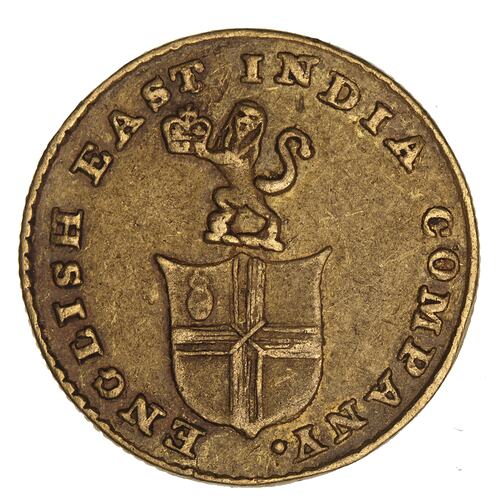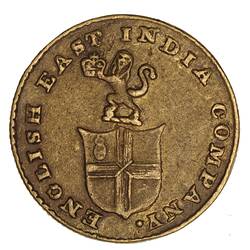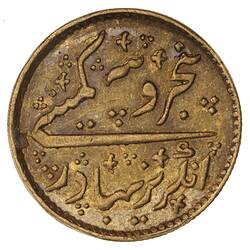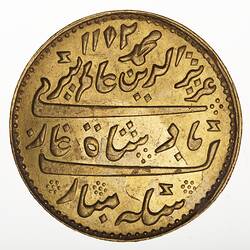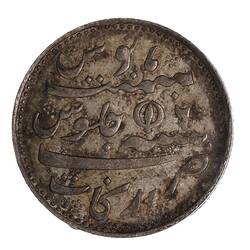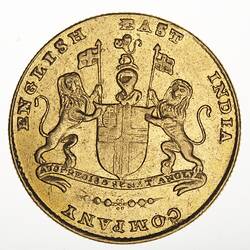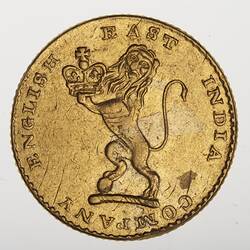Summary
5 Rupees or 1/3 Mohur, Issued by, East India Company, Madras Presidency, India, 1819
Minted by Madras Mint
Obverse Description
Arms of the Company; around, ENGLISH EAST INDIA COMPANY
Reverse Description
Legend in Persian (translation: Five Rupees of the Honourable English Company)
Edge Description
Milled
Significance
The East India Company obtained permission to strike Arkat style rupees from the Subah of Arkat (Arcot) in 1742. The first actual production was in 1759 in the name of Alamgir II and bear the Hegira date 1172 with the regnal year 6. Machine struck gold rupees (valued at 15 silver rupees) and their fractions were produced in 1817 with the same designs on obverse and reverse as the silver. Those coins were replaced in 1819 by types, having the same standard and weight, but bearing the Company arms or crest, because the use of the same designs on silver and gold coins of about the same size had led to the silver pieces being gilded and passed as gold. This was a new denomination introduced at that time and giving a better exchange between silver and gold; 5 rupees or 1/3 mohur.
More Information
-
Collecting Areas
-
Acquisition Information
Transfer from National Gallery of Victoria (NGV), A.H. Baldwin & Son Ltd, 15 Mar 1976
-
Date Issued
1819 AD
-
Issued By
-
Mint
-
Denomination
-
Series
-
Material
Gold
-
Axis
12
-
Classification
-
Category
-
Discipline
-
Type of item
-
Dimensions
19.5 mm (Outside Diameter), 3.85 g (Weight)
-
Shape
Round
-
References
Pridmore 244 KM#422
[Book] Pridmore, Fred. 1975. The Coins of the British Commonwealth of Nations, Part 4, India. 1., 38 & 79 Pages
[Book] Bruce, Colin R. 2006. Standard Catalogue of World Coins 1801 - 1900., 703 Pages
-
Keywords
British Commonwealth Coins, British Commonwealth and Empire Coins
